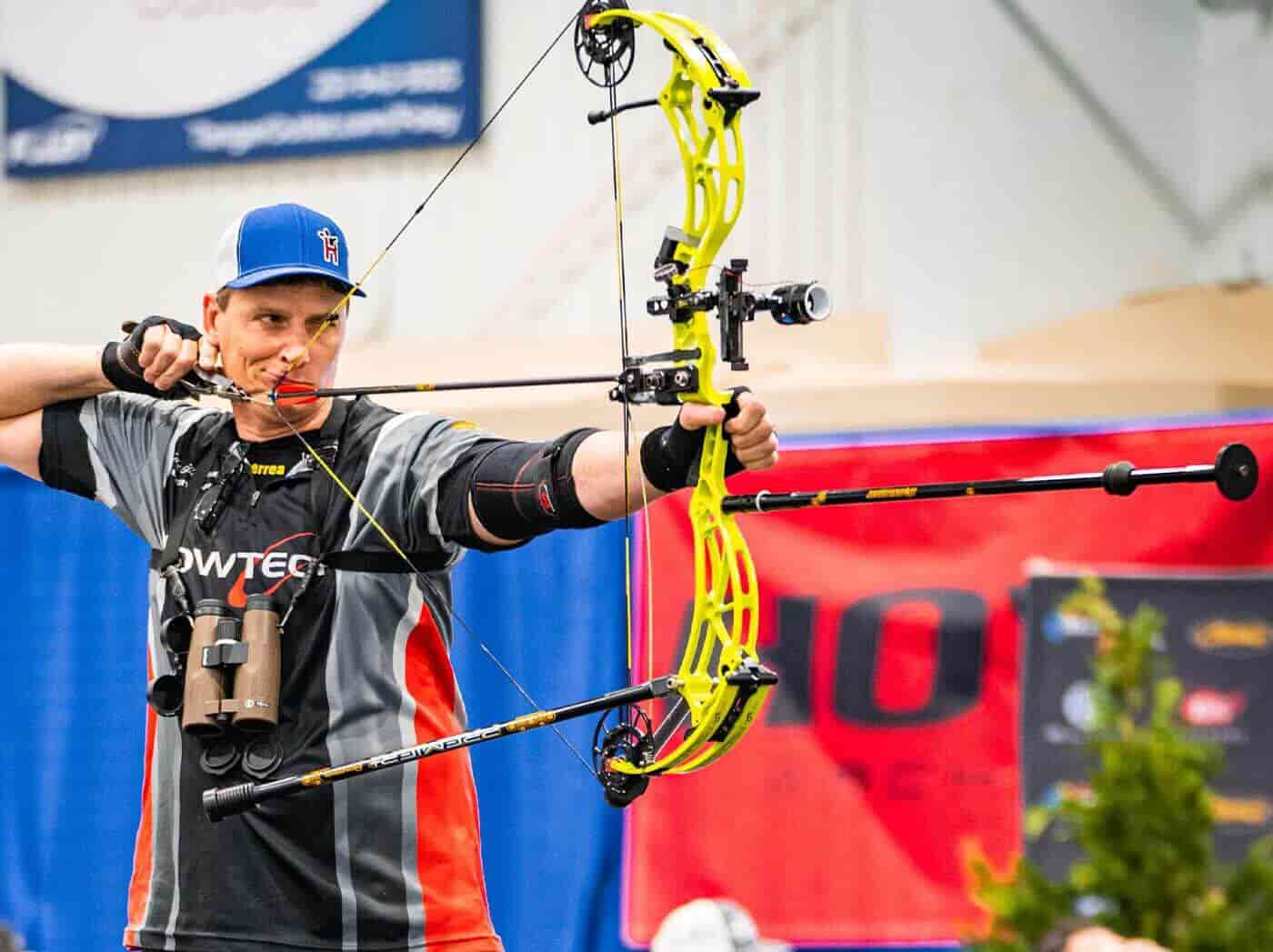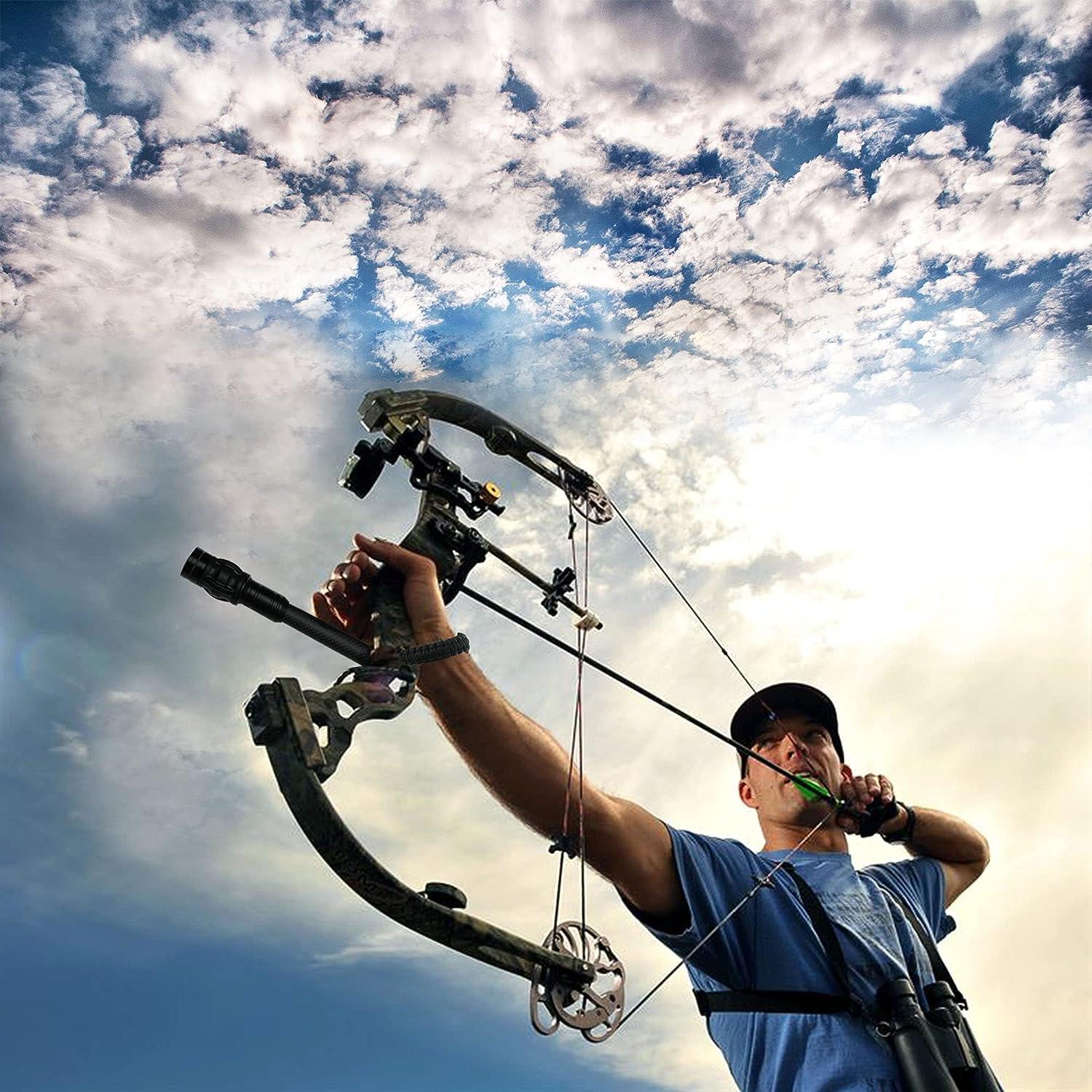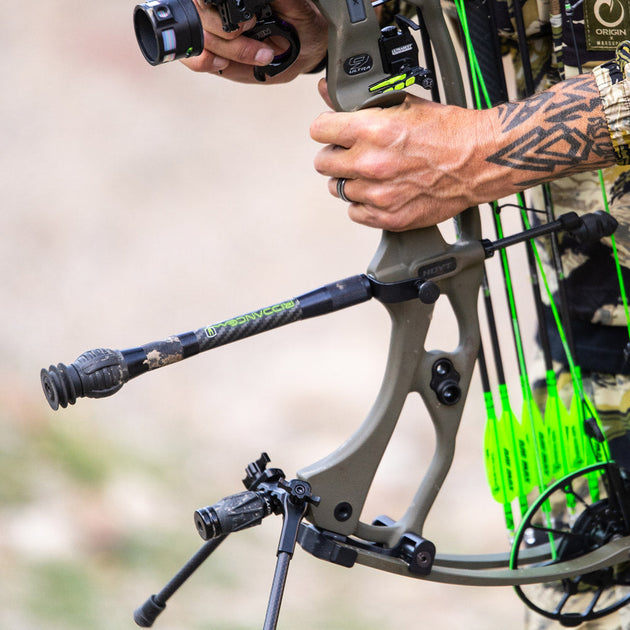Master the Art of Archery: Recognizing the Importance of a Stabilizer in Your Configuration
Whether one is a seasoned archer or just starting their journey, the relevance of a stabilizer in their configuration can not be overemphasized. By comprehending the advantages of using a stabilizer, taking into consideration the ideal factors when selecting one, and properly setting up and readjusting it, archers can elevate their abilities to brand-new heights.
The Function of a Stabilizer in Archery
A stabilizer plays an essential function in archery by boosting equilibrium and reducing vibrations during the shot. A stabilizer assists to neutralize these resonances by absorbing and dissipating the energy (archery stabilizer).
Among the major advantages of a stabilizer is its ability to improve balance. When an archer holds a bow, it can be challenging to preserve a constant aim. The weight of the stabilizer helps to distribute the weight uniformly, lowering the strain on the archer's arm and enhancing security. This allows the archer to concentrate on their purpose and execute a more precise shot.
In enhancement to equilibrium, a stabilizer likewise assists to decrease torque. When an archer releases the bowstring, there is an all-natural propensity for the acquiesce turn in the hand. This rotation, referred to as torque, can create the arrowhead to veer off-course. The weight and design of a stabilizer counteract this rotation, guaranteeing a more precise and constant shot.
Benefits of Making Use Of a Stabilizer
The application of a stabilizer in archery uses various advantages that boost an archer's performance and overall capturing experience. First of all, a stabilizer helps to decrease the vibrations created upon launch of the arrow. These resonances can cause the acquiesce torque or spin, resulting in imprecise shots. By taking in and dampening these resonances, the stabilizer improves the stability of the bow, allowing for more precise and regular shots.
Second of all, a stabilizer helps to stabilize the bow by adding weight to the front end. This weight circulation counteracts the natural propensity of the bow to tip forward upon release, minimizing the quantity of movement and improving the archer's capacity to keep aim on target.

Last but not least, a stabilizer can additionally work as a shock absorber, minimizing the shock and recoil experienced upon release. This not only enhances the convenience of capturing however also minimizes the threat of injury or pressure on the archer's body.
Just How a Stabilizer Improves Precision
Enhancing the accuracy of an archer's shots, a stabilizer plays an important role in enhancing overall efficiency. archery stabilizer. By including stability to the bow, a stabilizer aids lessen the unwanted activity and vibration that can take place during a shot. This reduction in motion allows the archer to preserve a constant objective, causing more consistent and exact shots

Furthermore, a stabilizer helps to wet resonances that happen upon release. These resonances can trigger the bow to drink, impacting the arrow's trajectory and this page precision. By taking in and dissipating these vibrations, a stabilizer aids to preserve the bow's stability and make certain a smooth and exact shot.
Furthermore, a stabilizer can additionally help in balancing the weight circulation of the bow (archery stabilizer). By adding weight to the front of the bow, a stabilizer aids to stabilize the weight of accessories, such as quivers or sights, which may be affixed to the bow. This well balanced weight distribution assists the archer preserve a controlled and steady capturing position, bring about enhanced precision
Aspects to Think About When Choosing a Stabilizer
When selecting a stabilizer for your bow, it is crucial to take into consideration several elements that will certainly add to its total effectiveness and suitability for your private shooting style. The very first variable to take into consideration is the length of the stabilizer.
Another element to think about is the weight of the stabilizer. The weight of the stabilizer can impact the equilibrium of your bow. A larger stabilizer can aid to improve and reduce vibrations stability, resulting in a steadier shot. However, a lighter stabilizer may be favored by shooters that focus on ability to move and rate.
Some stabilizers have flexible functions, such as adjustable size or adjustable weights, which permit you to personalize the stabilizer to your particular needs. Carbon fiber stabilizers are light-weight and long lasting, while light weight aluminum stabilizers provide a balance in between weight and rigidity.
Different stabilizers might work much better for certain shooting styles, such as target capturing or hunting. It is suggested to consult with seasoned archers or experts to determine which stabilizer will ideal suit your private needs.
Tips for Effectively Adjusting a stabilizer and setting up
Appropriate installment and modification of a stabilizer is crucial for maximizing its performance and making certain optimal capturing precision. When setting up a stabilizer, it is essential to follow a couple of vital steps to ensure its performance. Determine the ideal length of the stabilizer based on your shooting style and preferences. Longer stabilizers supply even more security yet can be much less manoeuvrable, while much shorter stabilizers supply increased ability to move but might give up stability. Attach the stabilizer to the bow using the provided mounting equipment as soon as you have actually picked the ideal size. Make certain that the stabilizer is firmly attached and aligned with the bow's riser.
After installing the stabilizer, it click for more is needed to make changes to attain the preferred equilibrium and shot uniformity. Beginning by changing the weight distribution along the stabilizer. This can be done by including or eliminating weights from the stabilizer's weight system. Experiment with different weight configurations to discover the balance that functions finest for you. Furthermore, think about adjusting the angle of the stabilizer to tweak the shot. A slight onward or in reverse tilt can affect the bow's equilibrium and how it responds throughout the shot.

Final Thought
In conclusion, a stabilizer plays a vital duty in archery by enhancing accuracy and minimizing bow torque. By including weight to the bow, it aids to balance and maintain the shot. When selecting a stabilizer, aspects such as length, weight, and material should be thought about to fulfill individual needs. Proper installment and change of the stabilizer are additionally important for optimal efficiency. Grasping making use of a stabilizer can considerably enhance the archer's skill and precision.
Moreover, a stabilizer can also aid in stabilizing the weight circulation of the bow. By including weight to the front of the bow, a stabilizer assists to stabilize the weight of accessories, such as views or quivers, which might be connected to the bow. Some stabilizers have adjustable features, such as adjustable size or flexible weights, which allow you to personalize the stabilizer to your certain requirements. Carbon fiber stabilizers are lightweight and sturdy, while light weight aluminum stabilizers offer a balance between weight and rigidness.
Longer stabilizers give more security yet can be much less maneuverable, while much shorter stabilizers supply increased ability to move however may compromise stability.